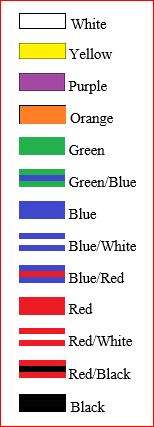Taekwondo
Our Belt Levels:
We Teach the 5 Tenants of Taekwondo
Requirements for each belt level include:
Punching
Basic and Advanced Levels
Kicking
Basic and Advanced Levels
Jumping and Sliding Kicks
Basic and Advanced Levels
Blocks
Basic and Advanced Levles
Defensive Punching
Forms
Youth and Adult Levels
Defensive Kicking
Body Grabs
Knife Techniques
Traditional and Blade Trainer
Sparring
Youth and Adult Levels
Board Breaking
Youth and Adult Levels
Korean Words and Counting
Each Belt Level Adds More
Competitive Tournaments
In House, Local and Regional
Do you love to Compete?
Do you want to be part of an Elite Team?
Take a look at our Competition Team.
GO TEAM ROUNDHOUSE!!!!!
Team Roundhouse is Recruiting new Members
We are looking for Students that have a drive to compete and want to experience multiple tournaments every year.
Every new Competition Team Member receives a Competition Team Uniform and a personalized Competition Team Jacket!!!
Joining our Competition Team is easy. Come in to the Office and let us know that you are interested.
Modern Taekwondo History
Beginning in 1945, shortly after the end of the WWI, new martial arts schools called Kwans were opened in Seoul, South Korea. These schools were established by Korean martial artists with backgrounds in Japanese, Chinese and Korean martial arts. The umbrella term traditional taekwondo typically refers to the martial arts practiced by the Kwans during the 1940s and 1950s, though in reality the term “taekwondo” had not yet been coined at that time, and indeed each Kwan was practicing its own unique style of martial art. During this time taekwondo was also adopted for use by the South Korean military, which increased its popularity among civilian martial arts schools.
After witnessing a martial arts demonstration by the military in 1952, South Korean President Syngman Rhee urged that the martial arts styles of the Kwans be merged. Beginning in 1955 the leaders of the Kwans began discussing in earnest the possibility of creating a unified style of Korean martial arts. The name Tae Soo Do was used to describe this unified style. This name consists of the tae “to stomp, trample”, su “hand” and do “way, discipline”.
Choi Hong Hi advocated the use of the name Tae Kwon Do, i.e. replacing su “hand” by kwon meaning “fist”. The new name was initially slow to catch on among the leaders of the Kwans. In 1959 the Korea Taekwondo Association (KTA) was established to facilitate the unification of Korean martial arts. In 1966, Choi established the International Taekwondo Federation (ITF) as a separate governing body devoted to institutionalizing a common style of taekwondo.
Cold War politics of the 1960s and 1970s complicated the adoption of ITF-style taekwondo as a unified style, however. The South Korean government wished to avoid North Korean influence on the martial art. Conversely, ITF president Choi Hong Hi sought support for the martial art from all quarters, including North Korea. In response, in 1973 South Korea withdrew its support for the ITF. The ITF continued to function as an independent federation, then headquartered in Toronto, Canada; Choi continued to develop the ITF-style, notably with the 1987 publication of his Encyclopedia of Taekwondo. After Choi’s retirement, the ITF split in 2001 and then again in 2002 to create three separate federations each of which continues to operate today under the same name.
In 1973 the South Korean government’s Ministry of Culture, Sports and Tourism established the Kukkiwon as the new national academy for taekwondo. Kukkiwon now served many of the functions previously served by the KTA, in terms of defining a government-sponsored unified style of taekwondo. In 1973 the KTA supported the establishment of the World Taekwondo Federation (WTF, renamed to World Taekwondo, WT, in 2017 due to confusion with the initialism) to promote taekwondo specifically as an international sport. WT competitions employ Kukkiwon-style taekwondo. For this reason, Kukkiwon-style taekwondo is often referred to as WT-style taekwondo, sport-style taekwondo, or Olympic-style taekwondo, though in reality the style is defined by the Kukkiwon, not the WT.
Since 2000, taekwondo has been one of only two Asian martial arts (the other being Judo) that are included in the Olympic Games. It became a demonstration event at the 1988 games in Seoul, a year after becoming a medal event at the Pan Am Games, and became an official medal event at the 2000 games in Sydney. In 2010, taekwondo was accepted as a Commonwealth Games sport.
At our School, one tuition gives our Students access to UNLIMITED taekwondo Classes.
Our School teaches and conforms to World Taekwondo and Kukkiwon styles and rules.
We specialize in
Forms ( Pumsea )
The Forms that we teach in our School are:
Gi Bon Il Jang
Beginner Form 1
Gi Bon Sa Jang
Beginner Form 2
Black Belt Forms:
Koryo – 1st Dan
Keumgang – 2nd Dan
Taebaek – 3rd Dan
Pyongwon – 4th Dan
Sipjin – 5th Dan
Jitae – 6th Dan
Cheonkwon – 7th Dan
Hansu – 8th Dan
Ilyo – 9th Dan
Sparring ( Pyeorugi )
World Taekwondo Style – Weekly and Private Classes Available
Breaking ( Gyeokpa )
Boards and Bricks depending on Skill Level
Breaks succeed only by using the correct technique
Power Breaking, Speed Breaking and Special Techniques
Self Defense ( Hosinsul )
Defend yourself when you need to by using the best Techniques
Throwing and Falling Techniques
How to do this correctly without hurting yourself
Both Anaerobic and Aerobic workouts, including stretching
Knife and Blade Trainer Techniques
Disarming an Opponent, with both Defensive and Offensive moves
And SOOOO Very Much More…



